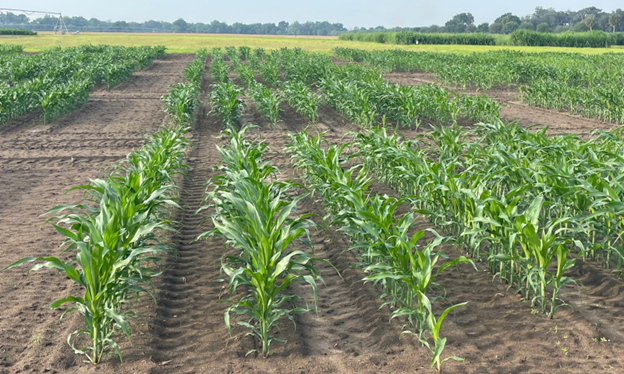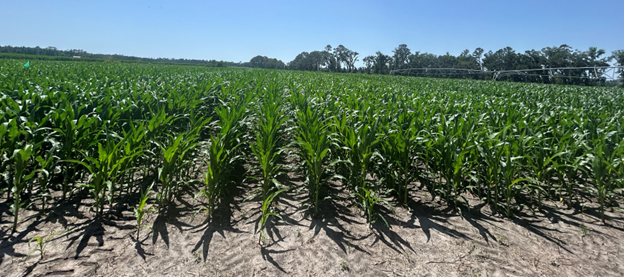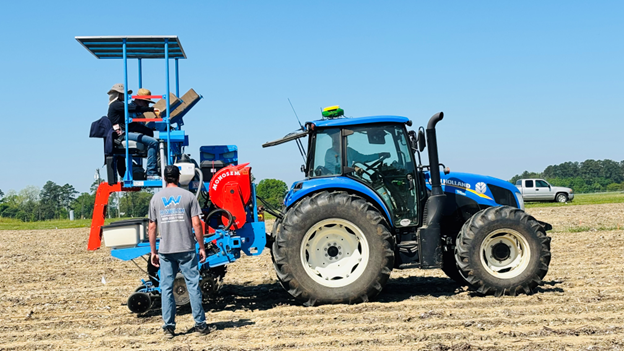Gabrielle Alves Comitre, Graduate Research Assistant, Sudeep Sidhu, Assistant Professor-Agronomy Department, UF/IFAS North Florida Research and Education Center, Quincy
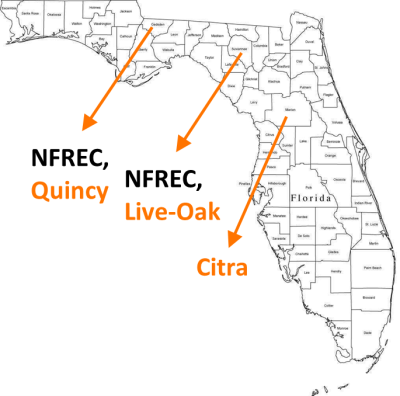 Variety evaluation plays a key role in helping growers select the best-fit variety for their farms. By testing varieties across multiple locations and seasons, we can identify those that consistently perform well, not just in one field or one year, but across a range of environments and over time. Choosing a well evaluated variety can make a huge difference on the farm.
Variety evaluation plays a key role in helping growers select the best-fit variety for their farms. By testing varieties across multiple locations and seasons, we can identify those that consistently perform well, not just in one field or one year, but across a range of environments and over time. Choosing a well evaluated variety can make a huge difference on the farm.
–
Corn
In 2025, irrigated corn variety evaluation is underway at three sites: North Florida Research and Education Center (NFREC)-Suwanee Valley, Live-Oak, NFREC-Quincy, and the Plant Science Research and Education Unit – Citra, Florida (Figure 1). At the Live Oak site, 15 corn varieties were planted on April 3rd, on 4 rows at 30-inch row spacing in long plots under a pivot and replicated 4 times. At the Citra site, 25 corn varieties were planted on April 8th, on 4 rows at 36-inch row spacing in 20-foot plots, replicated 4 times. At the Quincy site, 26 corn varieties were planted on April 10th, on 4 rows at 36-inch row spacing on 20-foot plots, replicated 4 times. The list of varieties being evaluated at each location is listed in Table 1 below.
Corn Varieties Being Evaluated in Live Oak, Quincy, and Citra, Florida in 2025 –
–
–
–
–
Cotton
The 2025 cotton variety evaluation program encompasses both irrigated and dryland trials to assess varietal performance under varying environmental conditions, the same way it was done last year. This comprehensive program includes small-plot replicated trials at two research sites, the NFREC-Quincy and the NFREC-SV, as well as on-farm long strip trials in Jackson County under dryland conditions.
A total of 32 cotton varieties and experimental lines are being evaluated in the small-plot replicated trials at NFREC-Quincy, and 28 at NFREC-SV (Table 2). All trials are planted on 36-inch rows to ensure consistency in plot design across locations. At the NFREC-Quincy site, the irrigated trial was planted on April 30, while the dryland trial was planted on May 1. At NFREC-SV in Live Oak, planting date for both fields (dryland and irrigated) was on May 15th. The on-farm variety trial in Jackson County planting is scheduled for next week.
Table 2 Cotton Varieties Being Evaluated at NFREC Quincy and Live Oak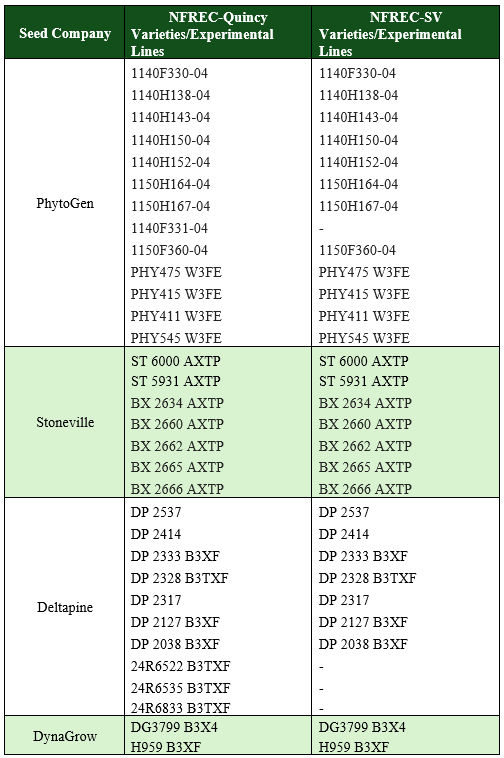 –
–
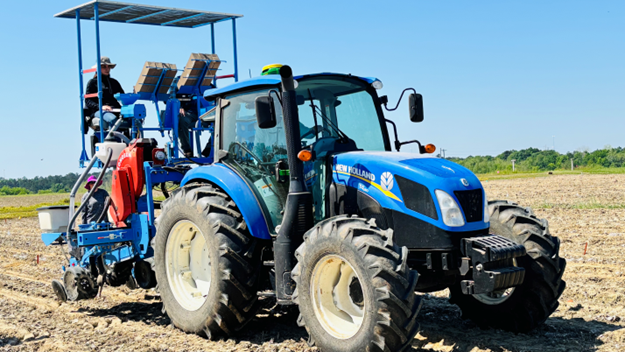
Figure 4: Irrigated cotton varieties being planted at the NFREC-Quincy site, the irrigated trial was planted on April 30th, 2025.
–
–
In addition to the official variety trials (OVTs), a few planting date studies are being conducted in NFREC-Quincy in small-plots to evaluate the performance of the top five corn and cotton varieties from 2024 under irrigated and non-irrigated conditions for two different planting windows: early and late planting dates. This study aims to assess how each variety responds to planting time, with the goal of identifying varieties that perform best in either an early or a late planting scenario.
Understanding varietal responses to planting dates is especially valuable for growers, as planting time is often influenced by unpredictable weather and field conditions. Identifying varieties that are better suited for early or late planting can provide farmers with more flexible and informed decision-making options, ultimately supporting better risk management and crop planning. The early irrigated and non-irrigated corn was planted on March 18th. The late irrigated corn was planted on April 29th, and non-irrigated corn was planted on April 30th. The early irrigated cotton was planted on April 29th, and non-irrigated was planted on April 30th. Late planting date for irrigated and non-irrigated cotton planting will be in the first week of June. The complete list of corn and cotton varieties for these studies is provided in Table 3 below.
Table 3: Corn and cotton varieties with early and late planting date at NFREC-Quincy, 2025 –
–

Figure 6: Dryland corn varieties: early and late planting date trial at the Quincy site on May 20th, 2025.
–

Figure 7: Irrigated corn varieties: early and late planting date trial at the Quincy site on May 20th, 2025.
–
Row Crop Field Day – Jul 21
A Field Day will be held at NFREC-Quincy on July 21st to highlight ongoing corn and cotton variety evaluation trials. Additional details, including the event schedule and agenda will be provided in a forthcoming announcement.
- 2025 UF/IFAS Irrigated Corn Variety Trials Summary - November 21, 2025
- 2025 Cotton and Corn Variety Trials Underway in North Florida - May 30, 2025
- 2024 UF/IFAS Cotton Variety Test Summary - February 28, 2025

